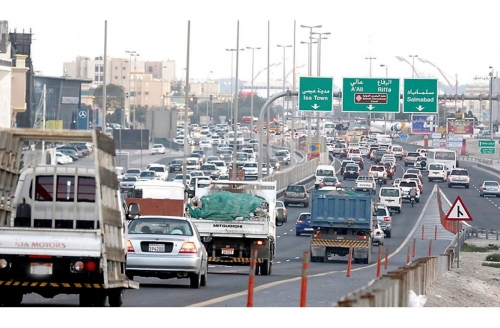The Ministry of Interior in Bahrain recently released statistics on licensed vehicles in the country, revealing that the number of vehicles on the road exceeded 760,000 by June. The data also highlighted that speeding violations were the most common offense during the same month. Although the exact number of violations was not specified, the Ministry’s website provided detailed information on the percentage of each type of violation. Speeding violations accounted for 28% of all offenses, along with other miscellaneous violations.
Additionally, other notable violations included running red lights at 24%, failing to wear seatbelts at 3%, illegal parking at 11%, expired registration certificates at 5%, and using mobile phones while driving at 1%. The statistics also indicated that 760,645 licensed vehicles were active on Bahrain’s roads by June. In terms of emergency response, patrol units handled 67% of all cases in June, with 29% related to traffic incidents and 4% related to security matters.
In terms of travel through Bahrain’s entry points, the King Fahd Causeway recorded the highest traffic with 2.88 million passengers, including 1.43 million arrivals and 1.45 million departures. Bahrain International Airport saw a total of 486,498 passengers, with 213,032 arrivals and 273,466 departures. Seaports had 1,912 passenger arrivals and 1,670 departures, totaling 3,582 passengers. These statistics provide insights into the volume of people traveling through Bahrain’s different entry points, highlighting the importance of monitoring and managing traffic flow efficiently.
These statistics serve as a reminder of the need for road safety measures and the enforcement of traffic regulations to minimize violations and accidents on Bahrain’s roads. Speeding, running red lights, and other common violations pose risks to both drivers and pedestrians, emphasizing the importance of adhering to traffic laws. The Ministry of Interior plays a crucial role in ensuring the safety and security of individuals on the roads through monitoring and addressing violations promptly.
By understanding the most prevalent offenses and their corresponding percentages, authorities can focus on implementing targeted measures to reduce violations and create a safer environment for all road users. Additionally, the data on the number of licensed vehicles and emergency response cases provide valuable insights into the overall traffic situation in Bahrain. Efforts to improve road safety through awareness campaigns, enforcement of regulations, and infrastructure enhancements are essential to enhance the efficiency and safety of Bahrain’s transportation system.
In conclusion, the statistics released by the Ministry of Interior shed light on the traffic and transportation landscape in Bahrain, highlighting key areas such as common violations, number of vehicles on the road, and emergency response cases. With a focus on promoting road safety and ensuring compliance with traffic regulations, authorities can work towards creating a secure and efficient transportation network for residents and visitors alike. Continued monitoring and evaluation of traffic data will be essential in identifying trends, implementing targeted interventions, and enhancing overall road safety in Bahrain.
















